There is an entire world waiting to be discovered beneath the deep, blue sea. Much of what is hidden beneath the ocean remains a mystery, but fortunately, underwater scuba diving explorations have brought some of these mysteries to light. Now it is possible for curious adventurers to swim beneath the waves, and witness firsthand marine life in a beautiful and mostly uninterrupted state. Well over 100,000 guests have been certified at Sandals + Beaches Resorts over the years. The training courses are available in all our amazing Caribbean Sandals and Beaches branded properties, and are taught by PADI® certified professionals, so you can be sure that you’re receiving the best instructor training available.
Insider tip: Combine your Caribbean holiday with your scuba diving certification and stay at one of the 15 award-winning Sandals all-inclusive resorts. Get certified for $120 and dive the rest of your stay for free!
All it takes to be able to do this is gaining a PADI® certification. This is important in order to learn all the technical aspects of diving, as well as how to do it safely. Once you’re certified you’ll be able to explore some of the most magical dive sites in the world, including reef explorations in places like Australia, Hawaii, and the Caribbean.
In this article on the Sandals Blog:
Things to do before your PADI® certification
Learn about the equipment
Learn the Buddy System Terminology
Getting Scuba Certified in 48 hours
Fast track your PADI® certification
Best Sandals resorts for scuba diving
Do a fitness check
You will be required to fill out a medical form prior to being able to go on any dives. This is for your safety and will be checked for authenticity. If you have a medical condition you will be required to get a signed (and possibly notarised) letter from your doctor.
Find a PADI® approved diving facility
Find a PADI® approved dive certification centre. If you decide to take your PADI® certification in the Caribbean, have a look at the Sandals and Beaches Resorts. All resorts are certified learning and certification centres!
Learn about necessary equipment
Learn about necessary equipment and whether it will be provided at your facility of choice. Rest assured, may you decide to take on your PADI® certification at one of the Sandals resorts, everything you need is included.
With state-of-the-art Newton Dive Boats, PADI® Certified staff members, and unparalleled dive locations, Sandals has been voted one of the Top 5 Dive Operations in the Western Hemisphere by PADI®.
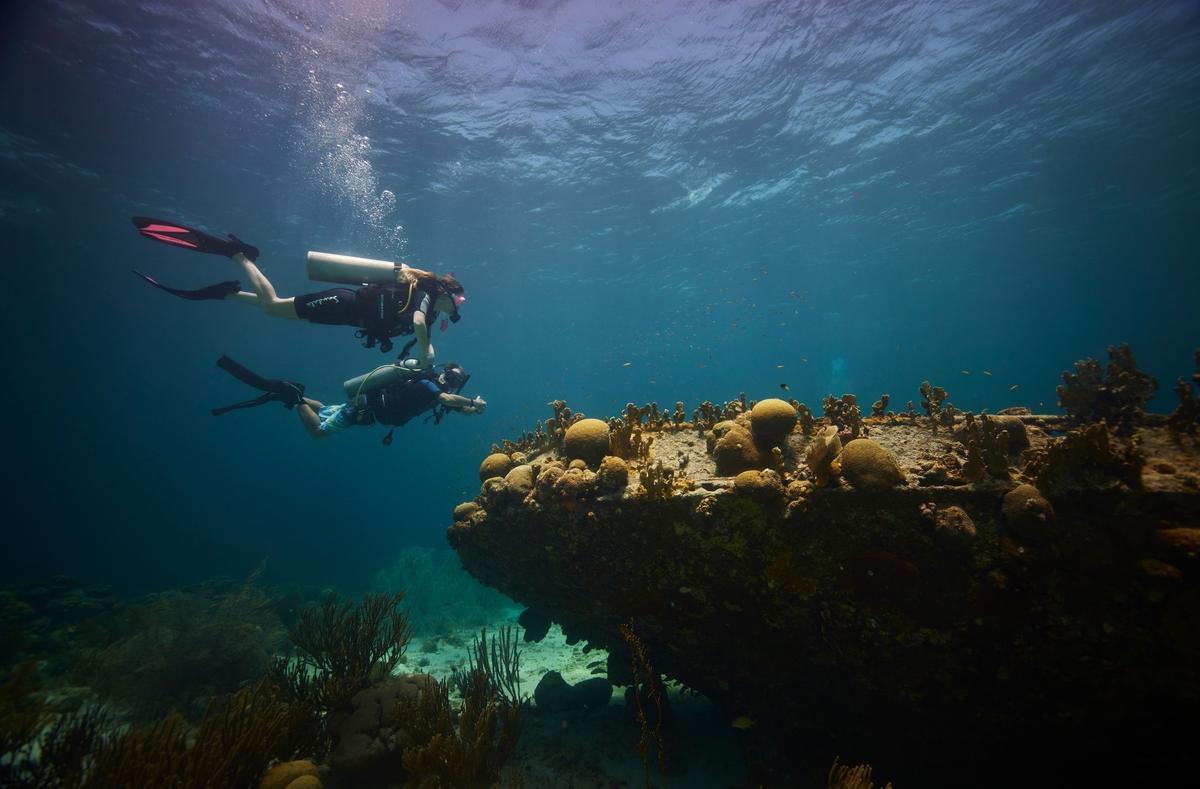
Purchase / rent equipment if necessary
Having solid, working equipment is essential to having the best scuba diving experience. If you do not have any of your own, and you are certain you want to dive often, there is no substitute for purchasing your own equipment. Renting equipment is another solid option, just make sure you inspect it beforehand to ensure its quality. Sandals and Beaches resorts provide you with state of the art equipment at no extra fee.
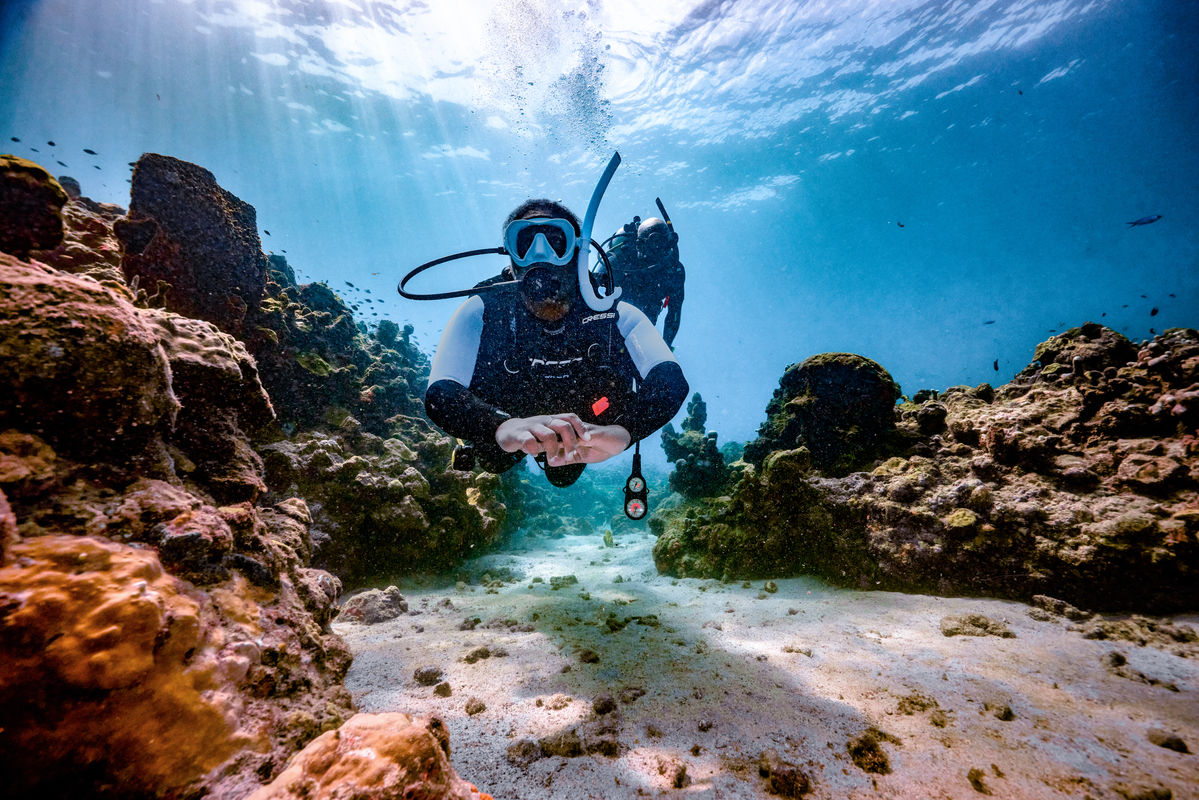
Register for training course and pay required fees
Many certification centres will allow you to expedite learning by going online and starting your course before you arrive. Even if you do not plan to study before you begin your course, it is important to secure your spot early, as space on boats is limited, so book and pay early, if there is an online sign-up option.
Find out about swimming pool / open water practice sessions
Want to get a leg up on your upcoming course? Call the resort or dive centre ahead of time, or even visit if you can, and ask to see their facilities. Ask them about what to expect during the swimming pool practice sessions. Read on to find out what to expect from a practise session at Sandals.
Take the big plunge
For scuba newbies, the decision to dive can be both exciting and scary. Who knows what you’ll run into underwater, especially if you’ve recently watched ‘Jaws’? For another, who knows how long it will take to get certified so you can scuba dive?
Fortunately, there are answers to both of these questions.
As far as scuba diving goes, guides at most locations have pretty detailed expectations on what sights can be witnessed at any given time. For example, at Fish Reef in the Bahamas (Exumas), you’re likely to come face to face with white grunts, yellowtail snappers, blue parrotfish and squirrel fish during a scuba exploration. While at Gallery Reef in Jamaica (Negril), you’re likely to see large crabs, turtles, sea horses, moray eels, sting rays, and nurse sharks.
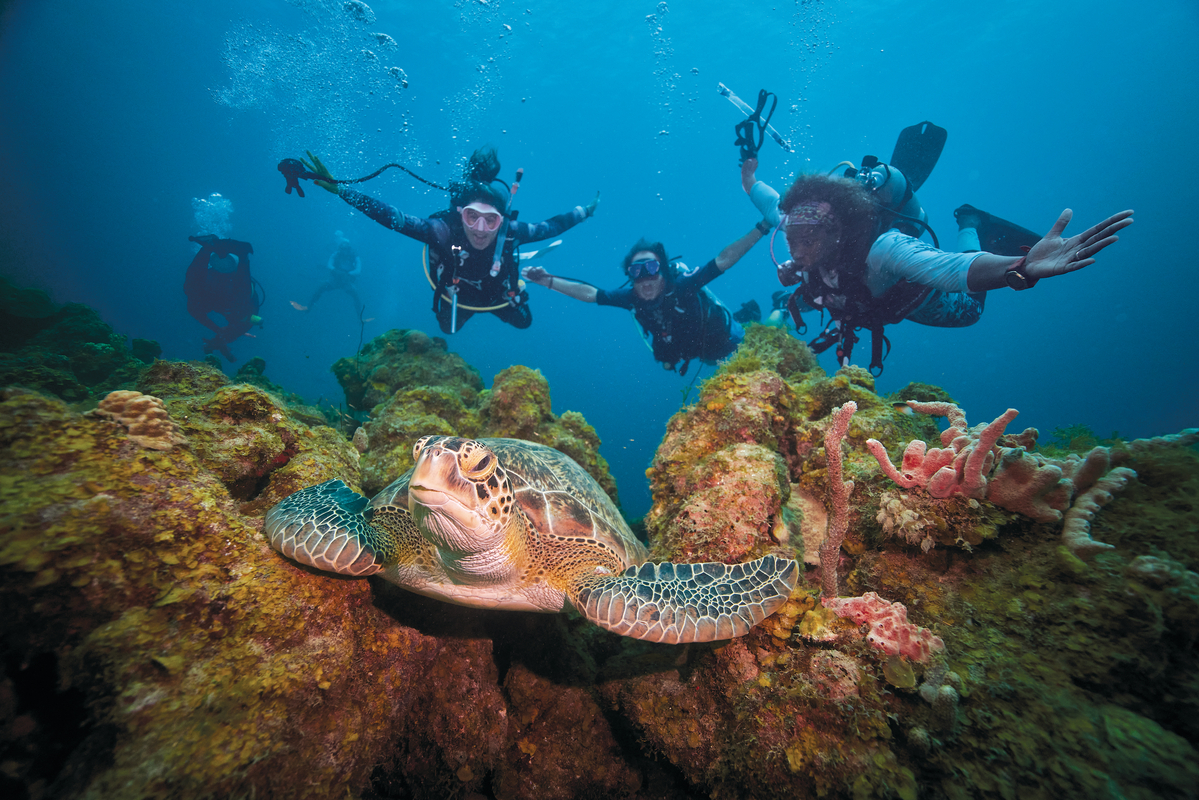
Dive guides are able to tell you with some degree of certainty what you can expect to see by taking into account tradition, patterns, and climate. The experiences of other recreational and professional divers in specific areas also come into play here – if sightings of sea turtles have been reported in a particular area by every other diver who goes scuba diving there, it is likely that you will witness these too.
Predictions like these make it easier to choose where you’d like to dive, once you’re PADI® certified, based on what you hope to experience. It must be said though, that even with the most solid predictions, there are the odd days where you may see nothing at all of what is expected. This is one of the reasons people get hooked on scuba – because it is always full of surprises!
PADI® certification
Getting PADI® certified takes determination, and drive to really get it done. The prize is an opportunity to dive underwater, witnessing the world from a whole new perspective. In some places, you can get PADI® certified in 48 hours. Caribbean resorts like Sandals allow you to do this as part of your holiday! All you’ll need is two days (or longer, you decide the pace!) to go through the entire training process at one of Sandals beach resorts and you’ll be well on your way to your first big dive!
Learn about the equipment
Knowing about the equipment that keeps you safe makes a world of a difference when you’re underwater. It is useful to make every effort to pay attention during your training course to instructions on how to assemble your gear, and what goes where. Here are some of the basic things you’ll need to be familiar with:
Wet Suit or Dry Suit – Typically made of neoprene rubber, you’ll find most divers wearing short or long versions of these, depending on where they’re diving.
Regulator – Serves as a converter of high-pressure air into ambient pressure, which makes it possible to breathe the air from your tank.
Purge Valve – Facilitates the clearing of masks and regulators without having to remove either.
Scuba Tank / Cylinder – Made out of steel or aluminium, this holds all the air you’ll need for the trek and is connected to the regulator.
Full or Half Foot Fins – Their primary purpose is to help you control your movement underwater. Fins help you navigate more quickly underwater.
Diving Mask – A diving mask protects your eyes from the salt water, and helps you to see everything clearly. It’s worth spending money on your own high-quality mask, as an ill-fitting mask can really put a damper on your experience, not to mention make it harder to keep water out.
Scuba Gloves – Not everyone wears these, but they can help keep your hands warm and protected, depending on the extent of your dive.
Weight Belts & Pockets – These more or less help counteract or balance off the buoyancy of diving equipment, like tanks and other equipment.
Defogger – You can invest in a defogger solution to prevent your mask from fogging up while under water, or you can just use baby shampoo, which in most cases, works just as well.
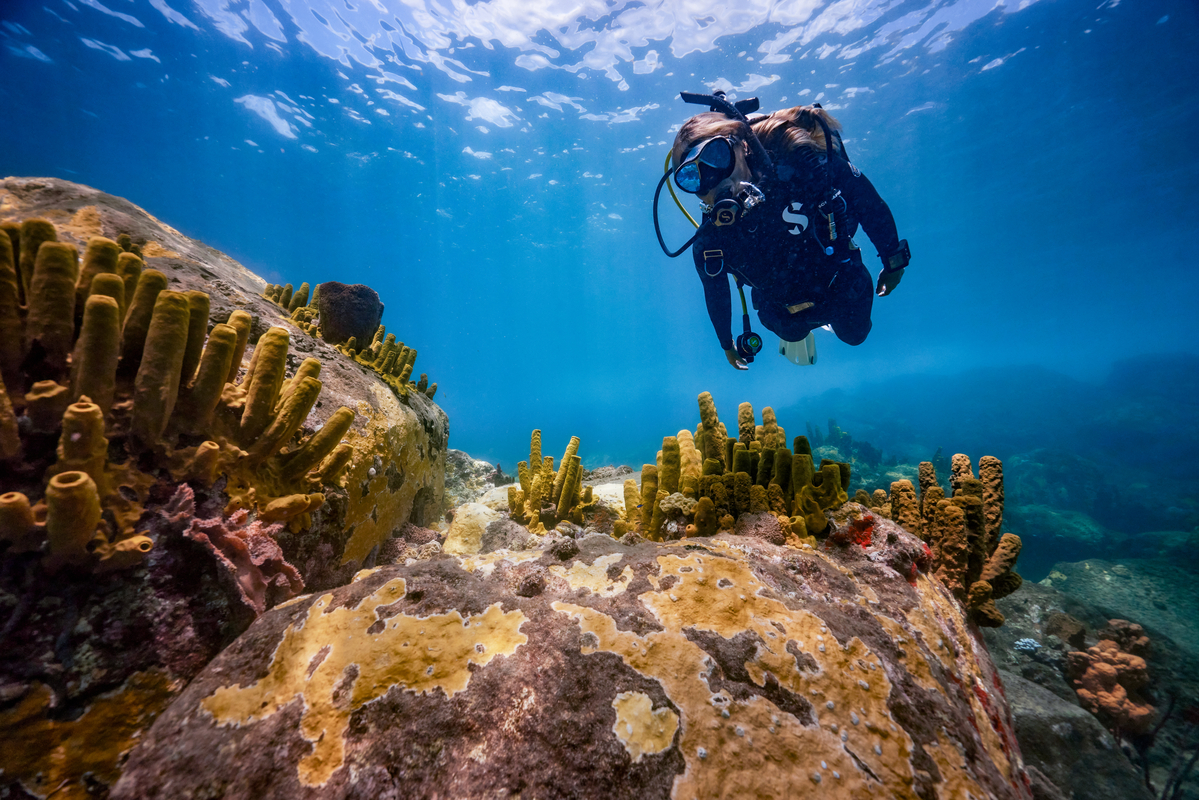
Learn the Buddy System Terminology
BWRAF (“Begin with Review and Friend”), or:
B – Buoyancy – The Buoyancy Control Device (BCD) is a jacket worn over the wetsuit. It is a vital part of diving wear, as it is connected to your tank and all the associated equipment. During the buoyancy check, make sure that you and your partner check the inflator button, and deflate valves.
W – Weight – Weights are important while scuba diving and help you to maintain the correct depth. As part of the BWRAF buddy check, you’ll want to ensure that both yours and your scuba buddy’s weights are secured and locked into place. E.g. weight belts, weight pockets.
R – Releases – Learn how to open / close the various releases on yours and your buddy’s wet suit. Check tank straps, shoulder and chest straps, etc.
A – Air – Check regulators, cylinder value (to ensure its open), air monitoring device, and even taste of air at this point. Check alternative air source and be sure you and your buddy know where to locate yours, and theirs.
F – Final Check – This is where you cross your T’s and dot your I’s. Check all gear, including mask, snorkel, fins, dive light, etc.), and be sure to secure loose hoses and other objects.
Once both divers are ready, you’re good to go!
Getting Scuba Certified in 48 hours
Check-in at any Sandals or Beaches resort in the Caribbean and go to the watersports/dive kiosk to register. Once there, the staff will take your name, and other necessary information. Your training will start the next morning!
How to get PADI® certified in 48 hours:
Starting from about 9 am, your training session will begin, likely with a training video. You can expect to receive all your course material on that day, so you can follow along and do study prep. If you are part of a group, you will collectively watch the training video, which is about 20 minutes long.
Ideally, you’ll have two opportunities for practice while in the water before your big dive. One of these will happen in the pool, and the other in the ocean. The pool dive session spans for around three hours, and will happen before the ocean dive, which usually happens the next day. You can expect a range of pool floor exercises.
The main purpose of the pool training is to get you comfortable in the water, and with your equipment. You will undergo confined water skills training, which includes learning key skills like alternating between your snorkel and regulator on the surface, and clearing your regulator.
As part of your training you will learn how to rid your mask of water underwater, something that may sound impossible, but is actually one of those things that definitely comes in handy and is easy to do. You’ll also learn underwater signals, and undertake air depletion exercises, both of which help you to feel in control and prepared for anything while underwater.
Part of the training is learning how to assemble your equipment, equipping /un-equipping your weight belt underwater, inflating / deflating your BCD, and learning how to breathe using a free-flowing regulator in the event that you encounter issues with your regulator while diving.
Skills like relieving pesky underwater leg cramps will also be in focus, as this is one of the things that can negatively affect your diving experience. To do this you can use a stretching technique where you hold the end of your fin, and bring it in towards you, and straighten your leg.
Read through the theory, while sipping a drink at the beach. Emphasis on the beach, sipping, or reading…
In all seriousness, getting through the approximately 5 chapters (about 70 pages) as part of the theory component of your certification process is mandatory, and will help you to be able to complete the review quiz at the end. Depending on how fast a reader you are (and how well you’re able to retain information), you may well be able to complete this in one day. It helps to get it out of the way as early as possible, in preparation for the actual exam the next day.
Insider tip:You’ll find chapter reviews at the end of each chapter, and various practice quizzes that you can review with your instructor.
This is where your studying will pay off; you’ll be required to complete 3 sections of about 10 questions each, as part of your exam. In order to be granted scuba certification, you’ll need to make a passing grade. Be sure to pass the exam before, or after your practice dives to gain certification!
Making it to this step means that you’ve successfully acquired your scuba certification. Congratulations! You’re now just about set to head out on your first real dive. Hopefully you’ve already planned this out with your tour operator or resort. If you haven’t, now is a good time to do so.
Quite a number of resorts have only one dive boat, so try schedule your dive upfront. Be on time and ready when the day comes.
In most cases, your first dive will be a two-tank trip, which means that you will go out on the boat and embark on two separate dives, likely with a break in between. Most trips leave early, from about 8:30 - 9 am. Depending on whether you’re on a private tour, or with a group, you can expect to return between 12 pm and 1 pm. Some boat charters offer lunch as part of the scuba excursion tour, and thus the tour may end later.
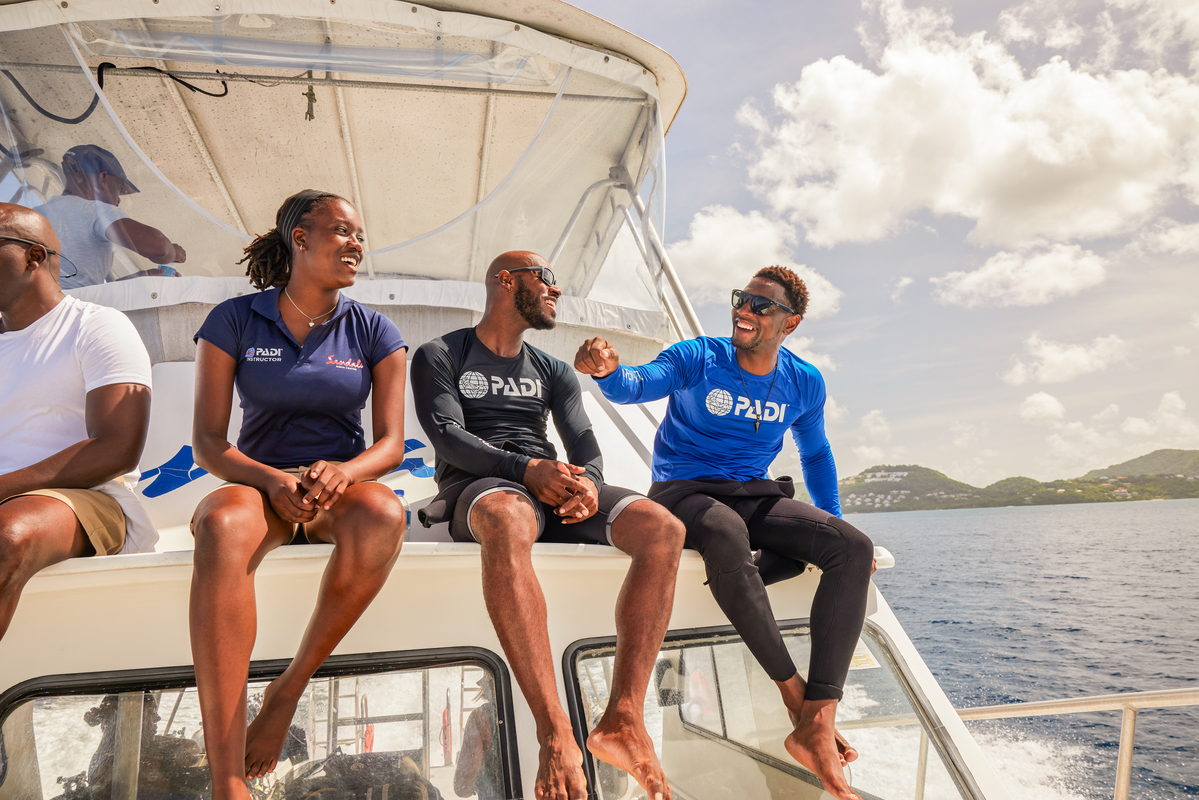
What to do once you arrive for your Big Dive
• Check in with Watersports, or the dive shop.
• Get prepped for your dive, which includes being fitted with your equipment.
• Board the boat and head out to your dive location.
• Last, but not least: take the big leap!
One giant step…
At the end of your amazing first dive, you and your group will do a controlled safety stop. This happens at about 15 feet below the water’s surface. It spans for about three minutes, as is important in order to allow any built up nitrogen within your body to be released. Shortly after that, you’ll embark on your second dive.
Enjoy it to the fullest!
You can rest easy for the duration of your stay or go and dive some more.
We’re pretty sure you’re going to take full advantage of your new certified diver status, and who can blame you, especially considering dives post the certification period are absolutely free for guests of Sandals resorts.
Note: It is not advisable that you go diving on the day that you’re leaving, as you may be at risk of Decompression Sickness (DCS). Most experts recommend that you take your last dive at minimum 18-24 hours before flying.
Many people choose to get PADI® certified while on holiday, but some instructors might argue it is best to do this beforehand, as the certification process can be time consuming. Getting your PADI® certification done before embarking on a holiday can be beneficial to travellers who prefer not having to focus on anything serious during their holiday. Both are options though, as some resorts offer the possibility to get your certification in a short space of time as part of your vacation.
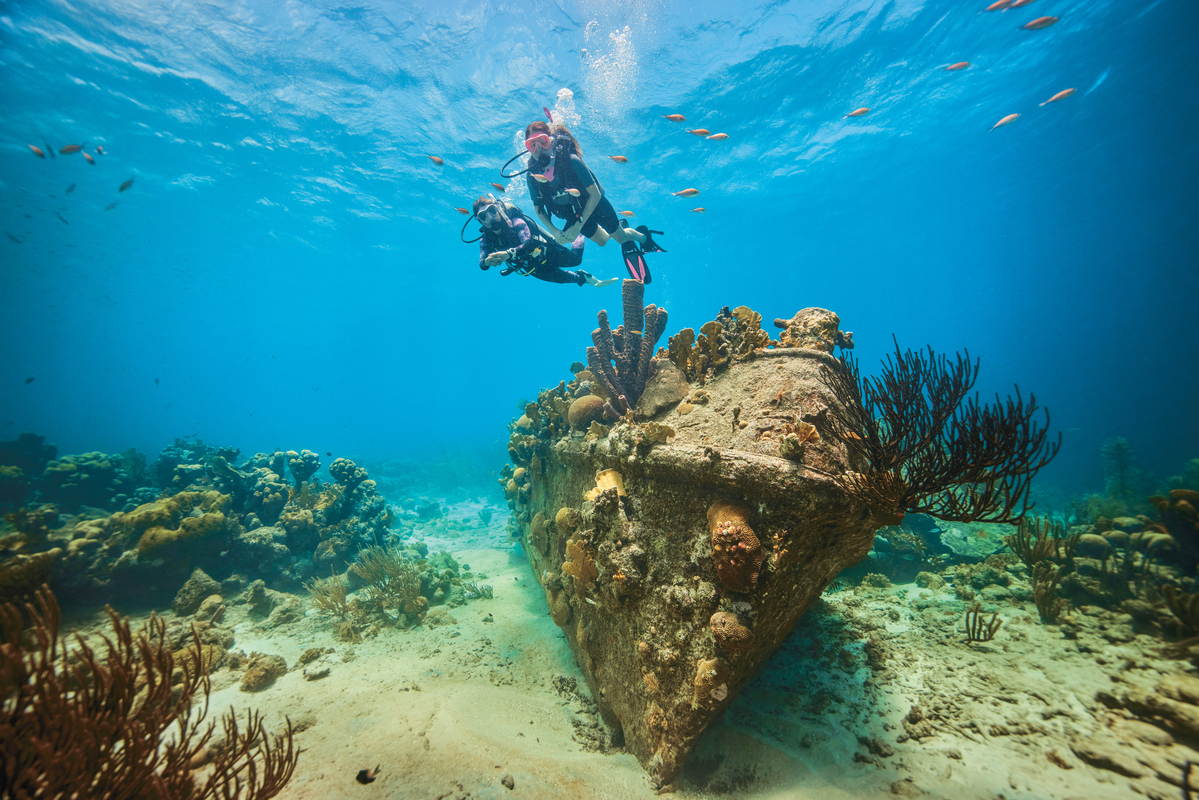
Scuba diving can be costly, but guests of Sandals don’t have to think too much about this as scuba diving is part of the all-inclusive holiday package. Once you’ve attained your PADI® certification, the rest of your dives are free. This is good news especially, for repeat visitors to Sandals scuba diving resorts, who can travel to the wide range of properties to have new experiences with scuba diving all around the Caribbean. Once you’re certified, you won’t need any additional training to dive at any of the Sandals properties.
The best Sandals resorts for scuba diving include Sandals Royal Bahamian in Nassau, which is great to spot sharks (and still be safe!). Sandals Grenada has an abundance of ship wrecks on offer, which also accounts for the Sandals resorts in Barbados. Also consider Saint Lucia, which has some amazing coral reefs. Find out more here. Other great scuba diving locations include the Sandals resorts in Exuma, Jamaica and Antigua.
You can't go wrong when looking for a great place to scuba dive in the Caribbean!
So there you have it, all of the steps you need to get PADI® certified within 48 hours. With some determination and enthusiasm, you too can get your open water certification and be diving all around the world when the opportunities arise.
Take note that once you have your open water diver certification, a whole list of more advanced certification opportunities can arise, each with their own exciting experiences and things to learn! Be sure to dive with Sandals on your next holiday, and you will see why so many guests have chosen us as the dive centre that they keep coming back to, for the best scuba diving experiences in the Caribbean!